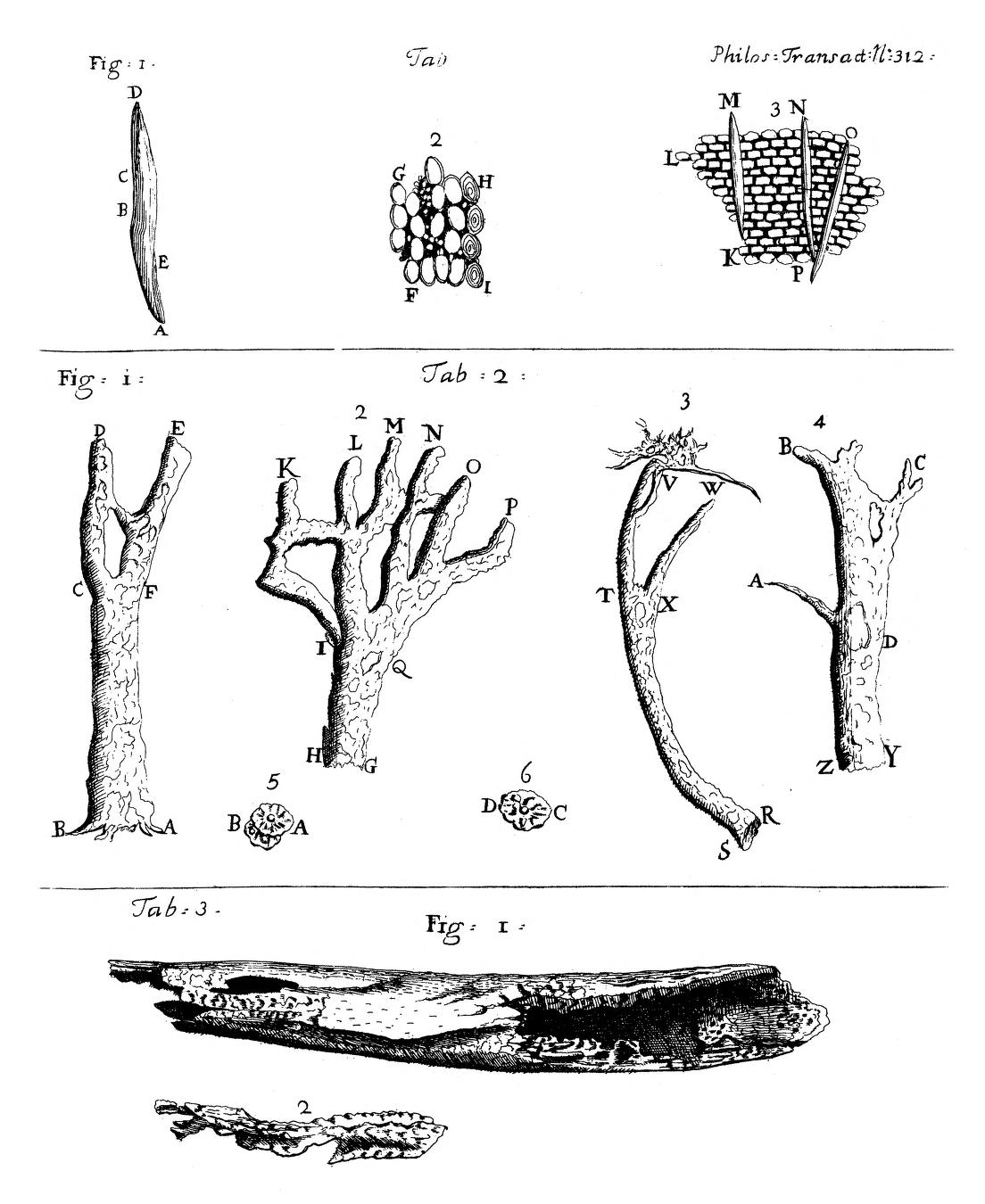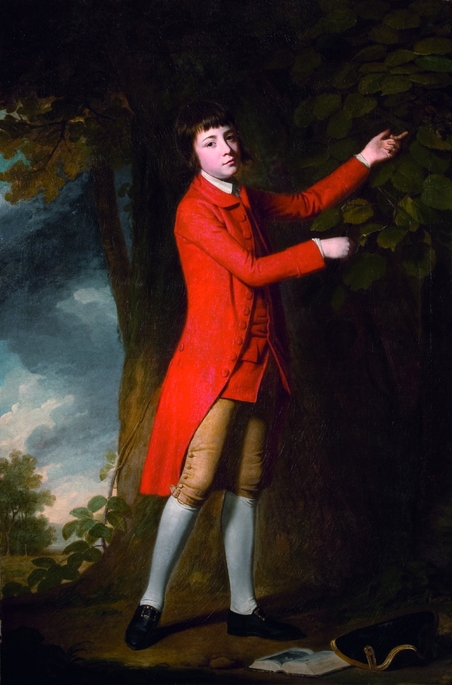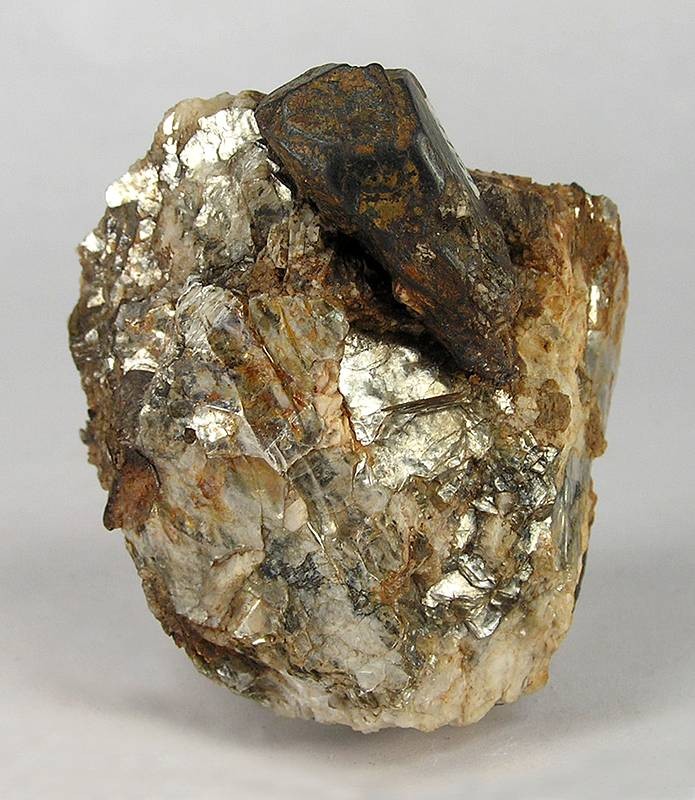|
William George Maton
William George Maton M.D. (31 January 1774 – 30 March 1835) was an English physician, a society doctor who became associated with the British royal family. He published on natural history and antiquarian topics. Life The son of George Maton, a wine merchant, was born at Salisbury, 31 January 1774. He attended Salisbury grammar school, and in July 1790 entered The Queen's College, Oxford. While there he became interested in botany, and encountered John Sibthorp. On 18 March 1794 Maton was elected a fellow of the Linnean Society, came to know Sir James Edward Smith the botanist. He became vice-president of the society; and the members showed their regard for him by calling a woodpecker, a shell-fish, and a genus of plants after him. In that year he graduated B.A. at Oxford, and in 1797 M.A. Maton began medical study at Westminster Hospital, and 11 July 1798 graduated M.B. at Oxford, and 15 April 1801 M.D. He was elected a fellow of the College of Physicians of London 30 Septem ... [...More Info...] [...Related Items...] OR: [Wikipedia] [Google] [Baidu] |
William George Maton 1774-1835
William is a masculine given name of Norman French origin.Hanks, Hardcastle and Hodges, ''Oxford Dictionary of First Names'', Oxford University Press, 2nd edition, , p. 276. It became very popular in the English language after the Norman conquest of England in 1066,All Things William"Meaning & Origin of the Name"/ref> and remained so throughout the Middle Ages and into the modern era. It is sometimes abbreviated "Wm." Shortened familiar versions in English include Will, Wills, Willy, Willie, Liam, Bill, and Billy. A common Irish form is Liam. Scottish diminutives include Wull, Willie or Wullie (as in Oor Wullie or the play ''Douglas''). Female forms are Willa, Willemina, Wilma and Wilhelmina. Etymology William is related to the German given name ''Wilhelm''. Both ultimately descend from Proto-Germanic ''*Wiljahelmaz'', with a direct cognate also in the Old Norse name ''Vilhjalmr'' and a West Germanic borrowing into Medieval Latin ''Willelmus''. The Proto-Germanic name is a ... [...More Info...] [...Related Items...] OR: [Wikipedia] [Google] [Baidu] |
Princess Victoria Of Saxe-Coburg-Saalfeld
, house = , father = Francis, Duke of Saxe-Coburg-Saalfeld , mother = Countess Augusta of Reuss-Ebersdorf , birth_date = , birth_place = Coburg, Saxe-Coburg-Saalfeld, Holy Roman Empire , death_date = , death_place = Frogmore House, Windsor, Berkshire, England , burial_date = 25 March 1861 , burial_place = Princess Victoria of Saxe-Coburg-Saalfeld (17 August 1786 – 16 March 1861), later Princess of Leiningen and subsequently Duchess of Kent and Strathearn, was a German princess and the mother of Queen Victoria of the United Kingdom. As the widow of Charles, Prince of Leiningen (1763–1814), from 1814, she served as regent of the Principality during the minority of her son from her first marriage, Carl, until her second wedding in 1818 to Prince Edward, fourth son of King George III.Tom Levine: Die Windsors. Glanz und Tragik einer fast normalen Familie. Campus-Verlag, Frankfurt am Main u. a. 2005, , S. 20. Early life Victoria wa ... [...More Info...] [...Related Items...] OR: [Wikipedia] [Google] [Baidu] |
John Hutchins (antiquary)
John Hutchins (1698–1773) was a Church of England clergyman and English topographer, who is best known as a county historian of Dorset. Life John Hutchins was born at Bradford Peverell, Dorset, on 21 September 1698. He was the son of Richard Hutchins (died 1734), who was for many years curate there, and from 1693 rector of All Saints', Dorchester. His mother, Anne, died on 9 April 1707, and was buried in Bradford Peverell Church. His early education was under the Rev. William Thornton, master of Dorchester Grammar School, and on 30 May 1718 he matriculated at Hart Hall, Oxford. In the next spring (10 April) he migrated to Balliol College, and graduated B.A. on 18 January 1722, but for some unknown reason became M.A. from Magdalene College, Cambridge, in 1730. Late in 1722 or early in 1723 he was ordained, and served as curate and usher to George Marsh, who from 1699 to 1737 was vicar of Milton Abbas and the master of its grammar school. In his native county Hutchins remained ... [...More Info...] [...Related Items...] OR: [Wikipedia] [Google] [Baidu] |
Gentleman's Magazine
''The Gentleman's Magazine'' was a monthly magazine founded in London, England, by Edward Cave in January 1731. It ran uninterrupted for almost 200 years, until 1922. It was the first to use the term ''magazine'' (from the French ''magazine'', meaning "storehouse") for a periodical. Samuel Johnson's first regular employment as a writer was with ''The Gentleman's Magazine''. History The original complete title was ''The Gentleman's Magazine: or, Trader's monthly intelligencer''. Cave's innovation was to create a monthly digest of news and commentary on any topic the educated public might be interested in, from commodity prices to Latin poetry. It carried original content from a stable of regular contributors, as well as extensive quotations and extracts from other periodicals and books. Cave, who edited ''The Gentleman's Magazine'' under the pen name "Sylvanus Urban", was the first to use the term ''magazine'' (meaning "storehouse") for a periodical. Contributions to the magazi ... [...More Info...] [...Related Items...] OR: [Wikipedia] [Google] [Baidu] |
Cinchona
''Cinchona'' (pronounced or ) is a genus of flowering plants in the family Rubiaceae containing at least 23 species of trees and shrubs. All are native to the Tropical Andes, tropical Andean forests of western South America. A few species are reportedly naturalization (biology), naturalized in Central America, Jamaica, French Polynesia, Sulawesi, Saint Helena in the South Atlantic, and São Tomé and Príncipe off the coast of tropical Africa, and others have been cultivated in India and Java, where they have formed hybrids. ''Cinchona'' has been historically sought after for its medicinal value, as the bark of several species yields quinine and other alkaloids. These were the only effective treatments against malaria during the height of European colonialism, which made them of great economic and political importance. Trees in the genus are also known as fever trees because of their anti-malarial properties. The artificial Quinine total synthesis, synthesis of quinine in 1944 ... [...More Info...] [...Related Items...] OR: [Wikipedia] [Google] [Baidu] |
Somerset
( en, All The People of Somerset) , locator_map = , coordinates = , region = South West England , established_date = Ancient , established_by = , preceded_by = , origin = , lord_lieutenant_office =Lord Lieutenant of Somerset , lord_lieutenant_name = Mohammed Saddiq , high_sheriff_office =High Sheriff of Somerset , high_sheriff_name = Mrs Mary-Clare Rodwell (2020–21) , area_total_km2 = 4171 , area_total_rank = 7th , ethnicity = 98.5% White , county_council = , unitary_council = , government = , joint_committees = , admin_hq = Taunton , area_council_km2 = 3451 , area_council_rank = 10th , iso_code = GB-SOM , ons_code = 40 , gss_code = , nuts_code = UKK23 , districts_map = , districts_list = County council area: , MPs = * Rebecca Pow (C) * Wera Hobhouse ( LD) * Liam Fox (C) * David Warburton (C) * Marcus Fysh (C) * Ian Liddell-Grainger (C) * James Heappey (C) * Jacob Rees-Mogg (C) * John Penrose (C) , police = Avon and Somerset Police ... [...More Info...] [...Related Items...] OR: [Wikipedia] [Google] [Baidu] |
Cornwall
Cornwall (; kw, Kernow ) is a historic county and ceremonial county in South West England. It is recognised as one of the Celtic nations, and is the homeland of the Cornish people. Cornwall is bordered to the north and west by the Atlantic Ocean, to the south by the English Channel, and to the east by the county of Devon, with the River Tamar forming the border between them. Cornwall forms the westernmost part of the South West Peninsula of the island of Great Britain. The southwesternmost point is Land's End and the southernmost Lizard Point. Cornwall has a population of and an area of . The county has been administered since 2009 by the unitary authority, Cornwall Council. The ceremonial county of Cornwall also includes the Isles of Scilly, which are administered separately. The administrative centre of Cornwall is Truro, its only city. Cornwall was formerly a Brythonic kingdom and subsequently a royal duchy. It is the cultural and ethnic origin of the Cornish dias ... [...More Info...] [...Related Items...] OR: [Wikipedia] [Google] [Baidu] |
Devon
Devon ( , historically known as Devonshire , ) is a ceremonial and non-metropolitan county in South West England. The most populous settlement in Devon is the city of Plymouth, followed by Devon's county town, the city of Exeter. Devon is a coastal county with cliffs and sandy beaches. Home to the largest open space in southern England, Dartmoor (), the county is predominately rural and has a relatively low population density for an English county. The county is bordered by Somerset to the north east, Dorset to the east, and Cornwall to the west. The county is split into the non-metropolitan districts of East Devon, Mid Devon, North Devon, South Hams, Teignbridge, Torridge, West Devon, Exeter, and the unitary authority areas of Plymouth, and Torbay. Combined as a ceremonial county, Devon's area is and its population is about 1.2 million. Devon derives its name from Dumnonia (the shift from ''m'' to ''v'' is a typical Celtic consonant shift). During the Briti ... [...More Info...] [...Related Items...] OR: [Wikipedia] [Google] [Baidu] |
Dorset
Dorset ( ; archaically: Dorsetshire , ) is a county in South West England on the English Channel coast. The ceremonial county comprises the unitary authority areas of Bournemouth, Christchurch and Poole and Dorset (unitary authority), Dorset. Covering an area of , Dorset borders Devon to the west, Somerset to the north-west, Wiltshire to the north-east, and Hampshire to the east. The county town is Dorchester, Dorset, Dorchester, in the south. After the Local Government Act 1972, reorganisation of local government in 1974, the county border was extended eastward to incorporate the Hampshire towns of Bournemouth and Christchurch. Around half of the population lives in the South East Dorset conurbation, while the rest of the county is largely rural with a low population density. The county has a long history of human settlement stretching back to the Neolithic era. The Roman conquest of Britain, Romans conquered Dorset's indigenous Durotriges, Celtic tribe, and during the Ear ... [...More Info...] [...Related Items...] OR: [Wikipedia] [Google] [Baidu] |
Thomas Rackett
Thomas Rackett (1757–1840) was an English clergyman, known as an antiquary. Life He was son of Thomas Rackett of Wandsworth, Surrey. Theodosius Forrest and Paul Sandby taught Rackett drawing. John Hunter interested him in natural history. He matriculated at University College, Oxford, on 16 November 1773, and graduated B.A. in 1777 and M.A. in 1780. In 1780, also, Rackett became rector of Spetisbury with Charlton-Marshall, in Dorset, and held the living for more than 60 years. He had multiple interests besides his parish, and was a musician. He concentrated on antiquarian researches, and spent time on scientific study in London. He came to know Richard Gough, Edward King, Richard Colt Hoare and William Lisle Bowles. He helped John Hutchins in the second edition of his ''History of Dorset'', and rambled on his pony over the whole of the county. Late in life he collected and took casts of ancient seals and coins. In 1794 and 1796 he accompanied Charles Hatchett and Willia ... [...More Info...] [...Related Items...] OR: [Wikipedia] [Google] [Baidu] |
Charles Hatchett
Charles Hatchett FRS FRSE (2 January 1765 – 10 March 1847) was an English mineralogist and analytical chemist who discovered the element niobium, for which he proposed the name "columbium". Hatchett was elected a Fellow of the Linnaean Society in 1795, and of the Royal Society in 1797. Hatchett was elected to the Literary Club in London in 1809 and became its treasurer in 1829. Life Charles Hatchett was born in Long Acre, London to John Hatchett (1729–1806), and Elizabeth Hatchett. John Hatchett was "(one of) the coachbuilders of London of the greatest celebrity". He later became a magistrate in Hammersmith. Charles Hatchett attended a private school, Fountayne's, in Marylebone Park, and was a self-taught mineralogist and analytical chemist. On 24 March 1786, Charles Hatchett married Elizabeth Martha Collick (1756–1837) at St Martin-in-the-Fields. Their children included: #John Charles Hatchett (bapt 27 January 1788 St Martin-in-the-Fields) #His daughter, Anna Frederica ... [...More Info...] [...Related Items...] OR: [Wikipedia] [Google] [Baidu] |
Spring Gardens
Spring Gardens is a dead-end street at the south east extreme of St. James's, London, England, that crosses the east end of The Mall between Admiralty Arch and Trafalgar Square. Part of the old liberty of Westminster and the current City of Westminster, it abuts Whitehall, Horse Guards Parade, Green Park, and the Charing Cross/Strand/Trafalgar Square locality. It is named after the gardens that stood here. These featured a decorative fountain in the time of Elizabeth I that was set in motion by passers-by treading on hidden machinery, knowingly or unknowingly. Mostly Victorian buildings have been built lining the street. Occupants The Whig playwright and poet Susanna Centlivre (c.1669 – 1723), who has been described as "the most successful female playwright of the eighteenth century", spent the end of her life here, and wrote her most famous work ''A Bold Stroke for a Wife'' at her home at the corner of Buckingham Court, Spring Gardens, in 1718.''Literary Landmarks of Lond ... [...More Info...] [...Related Items...] OR: [Wikipedia] [Google] [Baidu] |






.jpg)